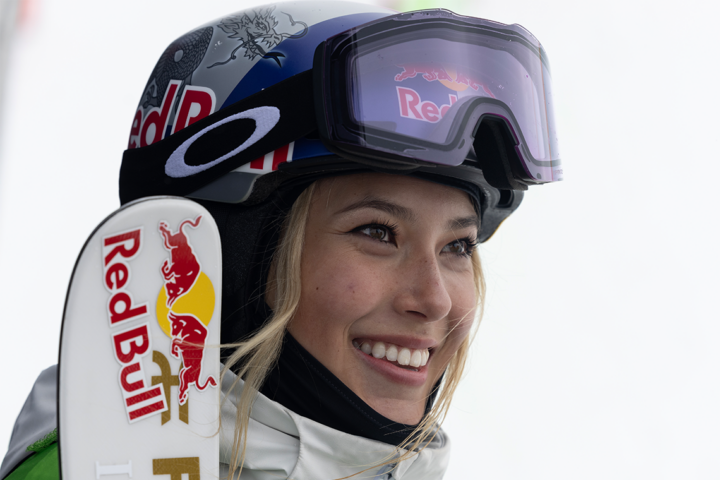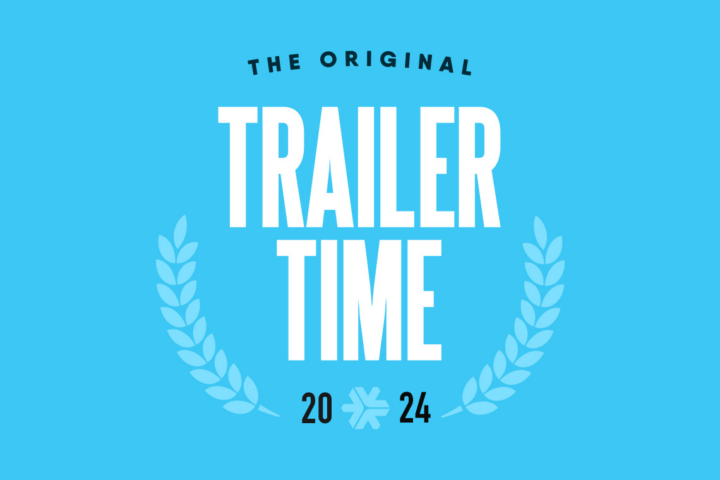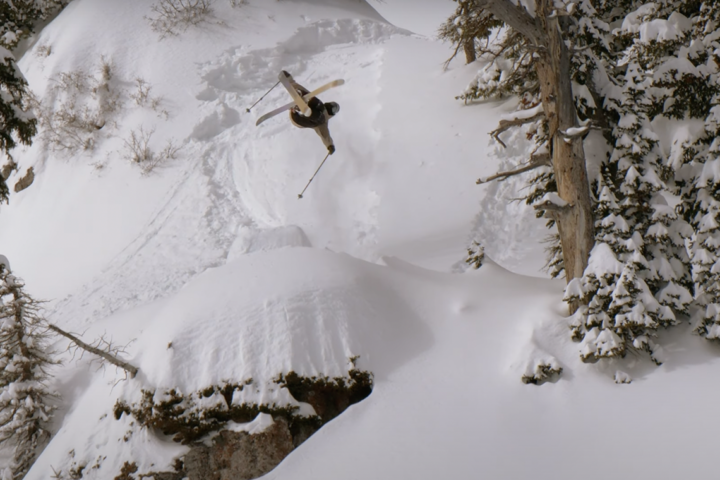Featured image courtesy Red Bull Content Pool / Scott Serfas
Everyone is familiar with the old adage, “seeing is believing,” but these days, given the countless ways people can be deceived through new technologies, such a surefire path to belief is hardly accepted. If the field of sight were limited to the human brain, free from outside interference, then believing what one “sees” or imagines achieves, self-referentially, greater credibility. We tend to trust ourselves more than anything external to us. One may agree that this easily applies to our thoughts – we believe what we think, but we may not be as confident about our imagination. We could picture, in our minds, Santa Claus piloting his sleigh of reindeers over neighborhood rooftops, but never actually see him with our eyes. We could picture our self as a Tom-Cruise like action hero single-handedly defending the Earth from aliens, yet this vision might never be affirmed outside of our minds. So, what gives some imaginings more promise for realization in the world than others? This is a crucial question, and of course, many factors come into play.
When it comes to believing in oneself, in what we can do, the answer relates to our abilities to negotiate physically and socially to our environment. This requires awareness, empathy and agility, the capacity to perceive, understand and respond appropriately to both physical geographies and what others are feeling or “going through” when their minds and bodies express themselves. Empathy, especially, is what allows us to “know what it’s like to walk in someone else’s shoes,” to situate oneself, virtually, in the realities of others. It also enables us, imaginatively, to visualize oneself in new circumstances or perform actions we have not yet attempted to execute. Empathy with oneself as an imaginative other or possible self, achieved through visualization, is often what allows us to successfully fulfill our aspirations. If progressing at a sport is your goal, you might rehearse being an alternative or future self who is performing specific actions, such as skiing moguls, through visualization, what neuroscientists call “motor imagery practice.” This technique helps us to better become the self we imagine.
According to pro skier Tatum Monod, 27, successfully skiing massive backcountry lines is “all about visualization,” down to the details: “Every little thing from getting out of the heli, to visualizing myself clipping in, and what it’s going to look like at the top of that line or what it’s going to feel like when I take off of the jump. I just visualize myself landing over and over and over and by the time you visualize it so many times, it’s like you’ve already done it. Visualizing it is the key puzzle piece to actually doing it. Without the visualization, you can’t actually do it. So, they go hand and hand.”
 Tatum Monod at the Red Bull Cold Rush event at Revelstoke Mountain Resort. Photo : Red Bull Content Pool / Scott Serfas
Tatum Monod at the Red Bull Cold Rush event at Revelstoke Mountain Resort. Photo : Red Bull Content Pool / Scott SerfasParker White, 27, shares Monod’s positive approach: “I try to think really confidently, basically. I try and visualize it—I think everybody does—you just visualize it over and over in your head, how it’s gonna go, and then you just drop into it. And in your head, without any doubt, like, ‘It’s gonna work. You know exactly what you’re doing. Do it.’” Of course, the idea of visualizing success as a means to achieving it is nothing new and has been a popular method in pretty much every field, from big business to action sports. In this article, I want to take things further, to illustrate the link between empathy and positive visualization and argue that visualization not only leads to success, whether that means skiing an off-camber line, landing a gnarly trick or recovering from injury, but also that it makes us more attuned to the environment. It enhances our awareness in all situations, physical and social. To be sure, positive visualization is an immensely powerful and far-reaching way to combine physical activity with emotional registers.
You might be thinking that merely visualizing yourself doing something can’t possibly lead to successfully doing it yourself. That there must be more involved. After all, we have limits. You can see yourself as an Olympic gymnast doing a phenomenal floor routine, but you can’t just go do it, no matter how many times you picture it. Approximation, however, creates possibilities for success, if not in the imagined arena of performance, then somewhere nearby. Freeskiing icon, Tom Wallisch, 31, speaks of the importance of doing an activity similar to one’s objective, repetitively (like Monod and White note), as preparation for the visualization that will work mutually to achieve your goals: “Probably the biggest factor in any of the air-specific tricks is visualization. Can you see it? Have you watched anybody else do this trick you’re going to try? Have you watched it a ton? Do you understand it? Can you see it in your head? Can you see your body doing it? Because if you can see your body doing it, it will do it itself if you have enough practice and enough repetition. Visualization and practice, these go hand and hand.” This theory, that past relationships to performances–often achieved through repeated practice of comparable modes of expression–directly influence present ones, has found support in recent research in cognitive neuroscience by scholars studying mimicry, perception-behavioral links (“seeing leads to doing”), and neurological modeling (“anticipatory brain activity”). There is also research in these studies showing that people react automatically to stimuli in similar ways notwithstanding the absence of related individual or shared experiences. Together, this research provides some very compelling explanations for the phenomenon of empathy and is suggestive of a number of techniques for accomplishing one’s goals, particularly goals which depend on mind-body coordination like skiing, the strongest technique of which appears to be positive visualization.
There is a preponderance of data from research conducted over the last fifty years showing that people unconsciously mimic others when observing them, whether for purposes of communication, bonding, survival or for no apparent reason, and that the findings are often the same for people observing people in photographs, videos, on stage or face-to-face. The ways in which unintentional mimicry occurs are numerous: facial expressions, including joy, sadness and pain; verbal, including rhythm and rate of speech, duration of pauses, words, grammar, tones of voice, accents, laughing, yawning; and body movements, including mother-child configurations, ducking and posturing influenced by rapport and liking between parties. Unintentionally performed, whether functional or adaptive, all of the types of mimicry referenced here suggest non-conscious, impartial, non-forceful mechanisms involved in personal development. Nonetheless, influences of rapport and liking on mimicry indicate that social, cognitive and subjective factors requiring higher levels of engagement are at work, such as when skiing with friends. Emotional and conceptual as well as other neurophysiological variables determine the kinds and qualities of mimetic responses.
According to Christopher Hsee of the University of Chicago, mimicry influences people through “emotional contagion,” which is “the tendency to mimic the verbal, physiological and/or behavioral aspects of another person’s emotional experience/expression, and thus to experience/express the same emotions oneself.” People “catch” the emotions of others through observation and the corresponding mimicry, which produces empathy. Elaine Hatfield of the University of Hawaii elaborates: “Because emotional contagion can be produced by innate stimulus features (such as a mother’s nurturing expressions and actions toward an infant), acquired stimulus features, and/or mental stimulations or emotional imagery, we say it is multiple determined. Because it can manifest as responses that are either similar (as when smiles elicit smiles) or complementary (as when a fist raised in anger causes a timid person to shrink back in fear), it represents a family of phenomena.”
Now extend this to skiing, keeping in mind the communities of skiers with which you regularly engage, either on the mountain, in print, or online ( Instagram, Snapchat, YouTube, etc.). As Hatfield puts it, “Emotional contagion is also a multilevel phenomenon: The precipitating stimuli arise from one individual, act upon (are perceived and interpreted by) one or more other individuals and yield corresponding or complementary emotions in these individuals (facial, vocal and postural expression; neurophysiological and automatic nervous system activity; and emotional behavioral responses). Thus, an important consequence of emotional contagion is attentional, emotional, and behavioral synchrony that has the same adaptive utility (and drawbacks) for social entities (dyads, groups) as has emotion for the individual.” Translated into practical terms, particularly because of the high level of attention necessary for proper visualization and real-time execution, skiing communities (observed in magazines, online or in person) help us to become better skiers, as well as more empathetic people.
In support of emotional contagion, photography-based research on the brain (functional magnetic resonance imaging, position emission tomography and magnetoencephalography) has shown a neurological link between performing an action and simply imagining the performance of that action. Indeed, several studies have shown that the same neurological activity occurs when someone imagines complex actions, such as doing tricks on skis, as when performing them. Other studies, most famously by Vittorio Gallese of the University of Parma, Italy, have demonstrated that the same neuron firing among brain cells called “mirror neurons” occurs when someone observes or thinks about an action, even a simple action like grabbing a glass, without actually performing the action herself. Talking about the value of positive visualization, big-mountain maven Sammy Carlson, 30, brilliantly accounts for this neurological occurrence: “Yeah, embedded in my head, right now I could, while I’m talking to you, I could mentally visualize, down the run backwards, taking off the jump, doing a rotation in the air and get that feeling you get when you’re literally flying through the air. I could feel that. I could feel that right now like I wasn’t talking to you.”
According to Gallese, such neurological mirroring happens because of what he calls “embodied simulation” and “intentional attunement”: “When a given action is planned, its expected motor consequences are forecast. This means that when we are going to execute a given action we can also predict its consequences. The action model enables this prediction.” The shared neural mapping – embodied simulation – between what is acted and what is perceived – constituted by mirror neurons – can also be used to predict the consequences of actions performed by others and therefore, in effect of the modeling, oneself too. This can be crucial to injury prevention. As Gallese puts it, “To perceive an action is equivalent to internally simulating it. This enables the observer to use their own resources to experientially penetrate the world of the other by means of a direct, automatic and unconscious process of simulation.” Or, as backcountry legend Ingrid Backstrom recalls about dropping into huge Alaskan lines: “I try to use positive visualization. It’s helpful for me if I’m in the moment looking at a line, standing on top of a line. You’re trying to visualize what you’re exactly about to do, then try to take it all the way through. For me, I try to visualize skiing out the bottom of the line. I also go over scenarios in my mind. I have my back-up plan quick visualization in there, so I am prepared for what might happen. It’s like, ‘Okay, here’s what I do if a, b, or c happens.’”
Gallese’s findings are strongly supported by Tanya Chartrand of Duke University and others working on perception-behavioral links who argue for adaptive functions to non-conscious mimicry. Consistent with Gallese, Chartrand shows that thinking about a behavior leads to performing it: “Merely perceiving another person saying, feeling or doing something makes us more likely to say, feel and do the same thing. Even in minimal circumstances, there is substantial evidence that social perception leads to automatic social behavior.” Simply put, seeing people skiing makes you more likely to ski. By extension, visualizing yourself skiing in certain ways – lines, tricks and so on – makes you more likely to perform them. Research on both mirror neurons and perception-behavioral links indicate a strong causal value to previous experiences with a given motor activity with regard to present and subsequent responses, regardless of their conscious or non-conscious qualities. In other words, the intensity of neuron firing along axons and through synapses, and therefore the neurochemical experience, differs depending on already established pathways for neuron firing specific to each individual. These pathways and the patterns they form are the result of the individual’s prior knowledge and experience with the action. Generally, an individual’s familiarity with the action corresponds to the rate and potency of neuron firing: the more familiar, the greater the rate and potency. This highlights the importance of combining repetition (having a performance history), positive visualization (motor imagery practice) and the self-referential empathy or empathy with one’s anticipated performing self which are vital to progressing at action sports. It brings us to a recent, major discovery in neuroscientific research on action sports training.
Franck Di Rienzo and Aymeric Guillot of Claude Bernard University Lyon, France, have shown that a simple addition to motor imagery practice for action sports, that is, to the positive visualization (imaginary representation) of ourselves successfully performing, significantly increases the known benefits, which include movement accuracy, efficiency, progression and speed. If we alternate frequently between what they call “dynamic motor imagery practice,” “a type of motor imagery [visualization] where athletes adopt a congruent body position and embody spatial and/or temporal invariants of the movement without entirely performing it,” and actually performing the actions imagined, our gains will be exponentially achieved. The bodily movements associated with the actions stimulate neuronal activity that deepens our empathetic responses and therefore affects congruence between embodied simulations and their real-time execution. The slowing down of time during visualization reinforced kinesthetically with approximated physical movements, and combined with recurrent real-time motor performances works all together to crystalize effectively the mind-body coordination necessary for progression.









